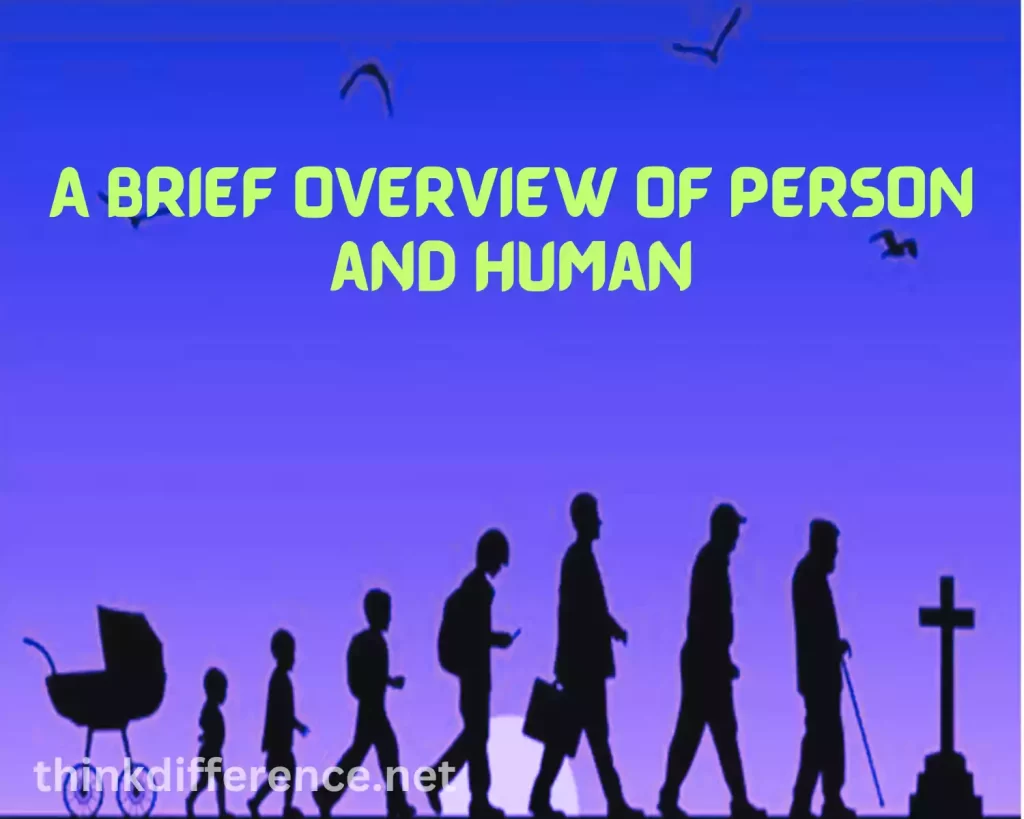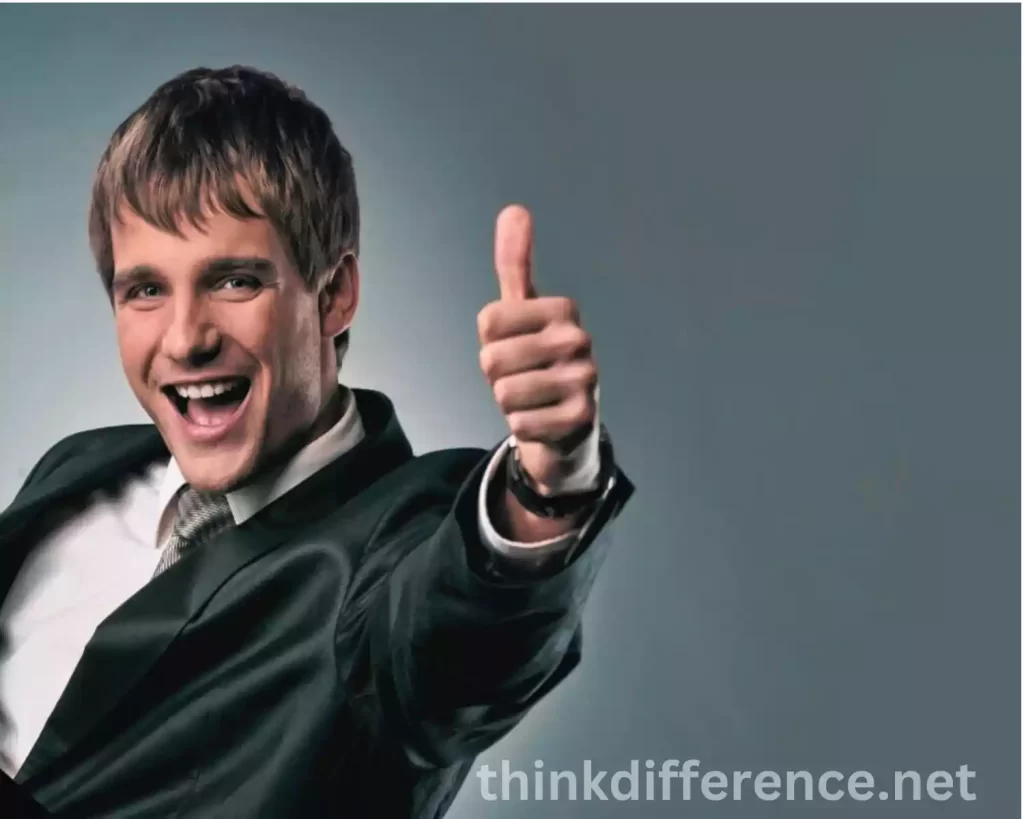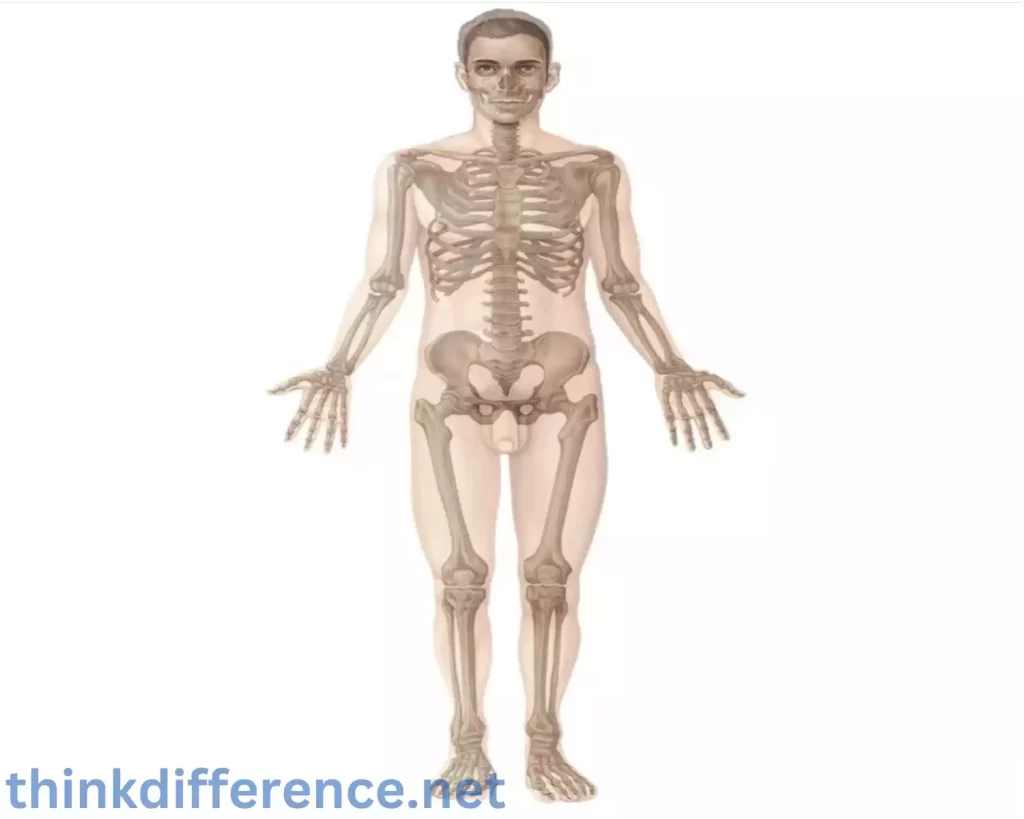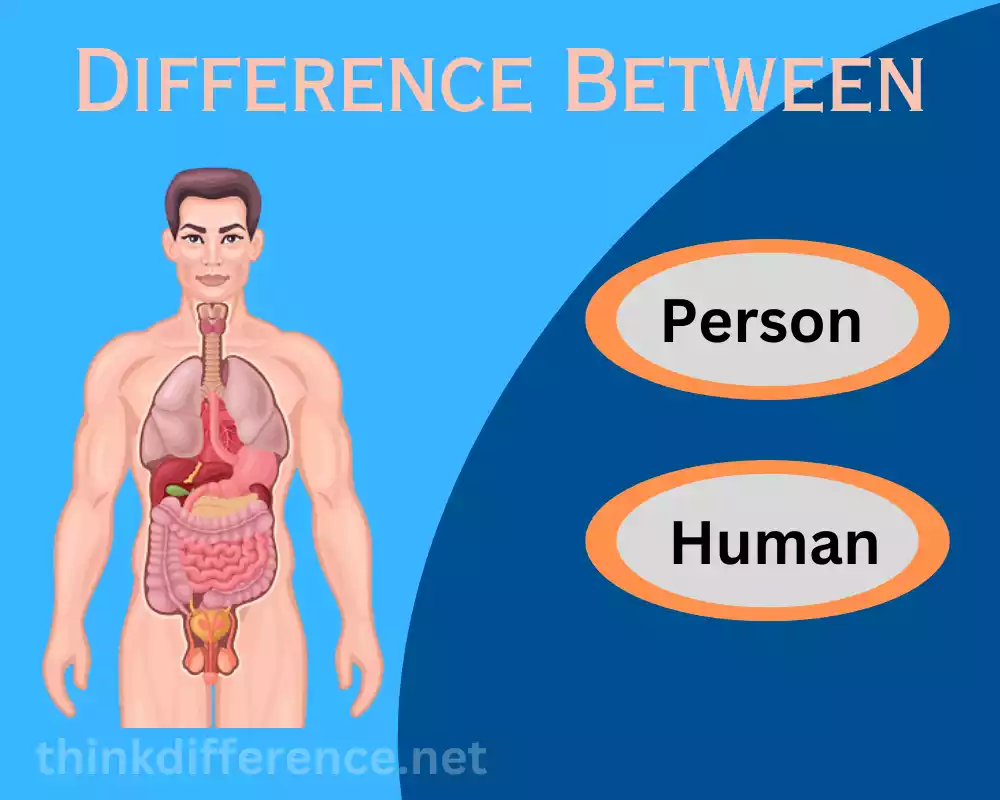A brief overview of Person and Human
Human refers to all members of Homo Sapiens – that is, people classified as humans according to biological characteristics and classification systems.

Personhood encompasses more than biological classification; it encompasses traits like consciousness, self-awareness, and moral agency. Recognizing unique individual features — characteristics, beliefs, or experiences that set one person apart from another within our shared human population is what personhood means to me.
Understanding the distinction between human and person is vitally important from social, ethical, and legal viewpoints, having implications in discussions on subjects like artificial intelligence, medical ethics issues, animal rights concerns, and reproductive technology. Recognizing personhood promotes inclusion and social justice while upholding individual rights with dignity resulting in informed yet compassionate decision-making across many fields.
Importance of understanding between Person and Human
Understanding the difference between people and humans is necessary for many reasons:
- Ethics: Unrealization of the difference between people and humans provides us with a more nuanced viewpoint on moral and ethical matters. Personhood often comes with particular moral considerations such as dignity, rights, and respect that may not apply equally across people groups; understanding this distinction helps guide ethical decisions regarding consent, autonomy, or treatment of individuals more precisely.
- Legal Implications: Legal systems typically grant individuals rights, protections, and responsibilities tailored to them as individuals. Legal frameworks provide individuals with appropriate protection under the law by distinguishing between humans and persons in areas like human rights protections, medical ethics considerations, or decision-making processes. This understanding plays an essential part in providing proper safeguards and legal standing under the law in fields like human rights litigation or decision-making processes about medical ethics issues or even decision-making within legal systems.
- Respecting Diversity and Individuality: Acknowledging the personhood of every individual acknowledges their distinctive experiences, qualities, and characteristics that define who they are as an individual and promotes respect for individual autonomy, perspectives, and beliefs while at the same time increasing diversity within our societies by acknowledging intrinsic worth in all people.
- Technological and Scientific Advancements: With artificial intelligence and other technological developments evolving rapidly, questions regarding non-human entities being granted personhood arise frequently. Recognizing what separates humans from beings helps inform discussions surrounding ethical and legal considerations regarding bestowing such rights to nonhuman entities.
- Animal Rights and Welfare: Understanding that some non-human creatures possess qualities associated with personhood can have profound ramifications for animal rights and welfare standards. Realizing some animals do have qualities associated with personhood could change our approach towards dealing with non-humans in our care resulting in improved welfare standards for non-human beings.
Understanding the distinctions between human and person is vital for successfully managing ethical, legal, and societal concerns as well as cultivating respect for individualism and diversity among living creatures – whether human or otherwise. It also facilitates respecting all beings’ well-being – human or otherwise – which contributes towards overall well-being for all life forms – humans included!
Characteristics of a Person
Human beings possess an array of cognitive, moral, and social characteristics as well as emotional and psychological features which define who we are as individuals and agents of society.

Here are some key attributes which comprise our Humanity:
- Consciousness: Consciousness refers to our awareness of ourselves and our surroundings. With consciousness comes an ability for individuals to interact, perceive, and experience life around them.
- Reason and logic: People possess the capability of thinking rationally and solving problems logically using logic. Additionally, they can analyze information to draw meaningful conclusions based on knowledge, evidence, and critical thought.
- Self-Awareness: People gain self-awareness when they can see themselves as unique individuals with individual beliefs and values, who can reflect upon their thoughts, emotions, desires, and actions with clarity and objective judgment.
- Moral and Ethical Capacity: People possess both moral sense and ethical sensibility that allows them to distinguish right from wrong, as well as make ethical judgments according to their moral values and act by those moral values. Individuals are accountable for all actions undertaken under their control.
- Empathy and Compassion: People show empathy by being able to understand the feelings and perspectives of other individuals, showing kindness towards those they care about, and showing consideration for their well-being as a means to build positive social bonds and foster strong social bonds.
- Social and Emotional Intelligence: People with social skills and emotional Intelligence possessing are capable of understanding social cues and forging meaningful relationships, controlling emotions while showing empathy, as well as possessing effective communication abilities.
- Autonomy and Agency: People can be autonomous, meaning they make decisions according to their will, make choices freely, and reach goals without needing permission from anyone. They possess agency that empowers them to control their lives, choose wisely, and set and reach goals more easily than before.
- Continuity and Identity: People possess an indomitable sense of continuity as they reflect upon and recognize their personal history, development, and experiences. People possess an evolving identity that continues to develop throughout life.
Although these traits apply to most individuals, their manifestation and degree can differ based on factors like culture, upbringing, and individual experiences.
Characteristics of a Human
People possess many varied biological, cognitive, and behavioral attributes unique to Homo Sapiens species that make up who we are as individuals.

Below are a few key characteristics that define us humans:
- Biological Attributes: Humans stand apart from other species with unique biological traits that set us apart, including bipedalism and opposable fingers; an abundant brain in comparison with body size; as well as language abilities.
- Cultural and Social Behavior: Humans are complex social beings who engage in numerous cultural practices. Human societies consist of social structures, norms, and institutions that make up their membership base – these elements include creating social groups, learning languages, and spreading information across generations as well as artistic works such as paintings or music making up part of cultural traditions like rituals or religion.
- Cognitive Abilities: Humans have advanced cognitive abilities such as abstract thinking, complex reasoning, and problem-solving capabilities. Humans possess knowledge that enables them to acquire and apply information creatively as well as display various intellectual qualities.
- Emotional Intelligence: Human beings possess an array of emotions. Additionally, humans possess emotional intelligence – the capacity to understand, manage, recognize, and empathize with other’s feelings – making this a key component of social interactions and relationships.
- Language and Communication: Humans have developed sophisticated communication systems over millennia; spoken and written language plays a central role in human interactions. Language enables humans to share cultural elements, express thoughts and participate in collective education initiatives.
- Tool Utilization and Technological Progress: Humans have long been adept at crafting and using tools, using these together with inventiveness and problem-solving abilities to advance technology throughout history. Humans have even created sophisticated technologies which enable them to adapt and modify their environments more readily than before.
- Human Capacity for Learning and Adaptability: Human beings have a remarkable capacity for adaptation, learning, and adaptation in different environments, which allows us to flourish across a diverse landscape while cultivating diverse cultural practices.
- Sense of Morality and Ethics: Humans possess an innate sense of ethics and morality which strongly informs their decisions and behaviors, such as distinguishing right from wrong, engaging ethical reasoning techniques, developing systems of values and principles, and engaging with ethical discourse.
Though these traits apply generally, it’s important to keep in mind that individuals may exhibit variations when it comes to cognitive ability and cultural practices based on genetics, personal experience, or environmental considerations.
Differences Between Person and Human
Here are a few key differences between humans and people:
- Conceptual Scope: The term “human” refers to those individuals classified as humans while “person” refers to all humans regardless of biological classification; including consciousness, self-awareness, and moral agency as important characteristics of this term.
- Individuality and Identity: Although humans all belong to the Homo sapiens species, each person carries with them a unique identity and individuality that stands apart from everyone else within human society. Personhood refers to recognizing characteristics such as beliefs or experiences that set an individual apart in humanity’s population.
- Moral and Legal Implications of Personhood: Personhood can have both moral and legal repercussions. While all humans can be classified as humans biologically, not everyone is recognized as persons under the law. Personhood comes with moral rights as well as protections and obligations associated with being considered human in society – while also acknowledging individual agency and autonomy.
- Cognitive and Psychological Capabilities: People possess cognitive and psycho-psychological capacities beyond their basic biological traits, including rationality, consciousness, self-awareness, and moral reasoning. Although present across humans in all manifestations and forms, the manifestation may vary between people.
- Ethical and Philosophical Discussions: Personhood has long been at the core of ethical and philosophical discussions. There remain significant disagreements around when personhood begins (conception, birth, or certain developmental stages) as well as whether personhood should extend to entities outside humans.
- Culture and Society Factors: Cultural and social forces impact how individuals define personhood. Personhood criteria vary across cultures and societies according to values, beliefs, and traditions that determine who gets treated fairly in any society and can play an integral part in how rights are granted and granted within communities.
Though there may be subtle distinctions, persons, and humans tend to be used interchangeably and intertwined in everyday language. Each discipline, context, and philosophical viewpoint often provides different interpretations for these terms.
Examples and Applications
Find examples and applications of this distinction across many fields and contexts by following some of these links:
- Artificial Intelligence and Personhood: Artificial intelligence (AI), one form of artificial intelligence, has raised several concerns over its personhood systems. At issue here is whether AI entities with human-like cognitive capacities such as decision-making or language processing should be considered moral or legal agents.
- Medical Ethics and Personhood: When discussing issues like end-of-life care, organ donation, or reproductive technology the distinctions between personhood and humanity become very relevant. When medically complex situations are involved ethical dilemmas may arise that make this determination extremely complex.
- Animal Personhood: Personhood does not only refer to humans; animal personhood also encompasses discussions surrounding certain animal species being recognized as “people”, with legal protection being extended as well as ethics surrounding treatment decisions being addressed in terms of ethical considerations.
- Legal and Civil Rights: Legal systems recognize personhood when assigning protections and rights to individuals. Civil rights in particular rely heavily upon this concept of personhood to ensure all citizens are treated equally by law and protected accordingly.
- Moral Responsibility and Accountability: The distinction between personhood and humanity influences our moral responsibilities and liabilities. Recognizing individuals as moral agents means holding them responsible for decisions made, actions taken, and ethical obligations fulfilled.
- Ethics and Philosophy Debate: The distinction between human and person drives philosophical discussions around topics like consciousness, personal identity, and moral rights. Such dialogue examines criteria of personhood as well as implications for ethical frameworks.
- Reproductive Ethics: Reproductive technologies and discussions surrounding conception bring up questions of personhood. For example, at what stage should a developing fetus be considered an individual possessing rights?
- Social Justice and Equality: Recognizing and Respecting Personhood, No Matter Race Gender Or Socioeconomic Status Achieving social justice requires understanding the distinction between human beings and persons, thus leading to inclusive societies with upheld rights for every member.
These examples demonstrate how distinctions between person and human can be applied across a range of fields and contexts, with significant impacts on ethical frameworks, legal systems, and societal discourse on the rights, responsibilities, and treatment of individuals.
Conclusion
The concept of a “person” and a “human” represents the pinnacle of complexity and beauty. We, as human beings, possess the capacity for intelligence, emotions, and creativity that set us apart from all other life forms. Our interconnectedness through social bonds and our quest for self-awareness and meaning form the core of our existence.
Humanity’s potential for both benevolence and malevolence makes it an intriguing enigma, and the path to progress and harmony lies in acknowledging our common humanity. As we evolve, embracing our diversity and working together to address challenges, we can create a brighter future for generations to come.



